Customize Unraid settings
Unraid OS automatically functions but allows further customization of settings such as IP address, hostname, disk tunables, and more via the Settings tab in the Unraid WebGUI.
Tailscale is an optional plugin that you can install via the Apps tab by searching for "Tailscale". It provides secure remote access to your network and adds a Tailscale section to your Settings for enhanced remote management capabilities.
Don't forget - the WebGUI includes built-in help. To access help for a specific field, click the prompt next to it, or use the Help icon at the top right of the interface to toggle help for all fields.
System Settings
System Settings enable you to configure key functionalities like network, share, VM, and disk settings.
CPU Pinning
CPU Pinning allows you to assign specific CPU cores to VMs (Virtual Machines) or Docker containers. This is particularly important for performance-sensitive workloads, such as gaming VMs. Even if you manually assign Docker containers to avoid conflicts with your gaming VM, the host operating system may still utilize those cores for tasks like managing the WebGUI, running a parity check, or performing BTRFS operations.
- When you pin a core to a VM or Docker container, that core is allocated to the VM or container. However, Unraid OS may still access it for routine tasks.
- When you isolate a core, it becomes dedicated to the VM or container and is no longer accessible to Unraid OS.
- You can pin cores without needing to restart your server, but applying CPU isolation changes does require a system restart.
Date & Time
On this page, you can set your time zone and toggle the use of up to four NTP servers. You should adjust Unraid to match your time zone for accurate timekeeping.
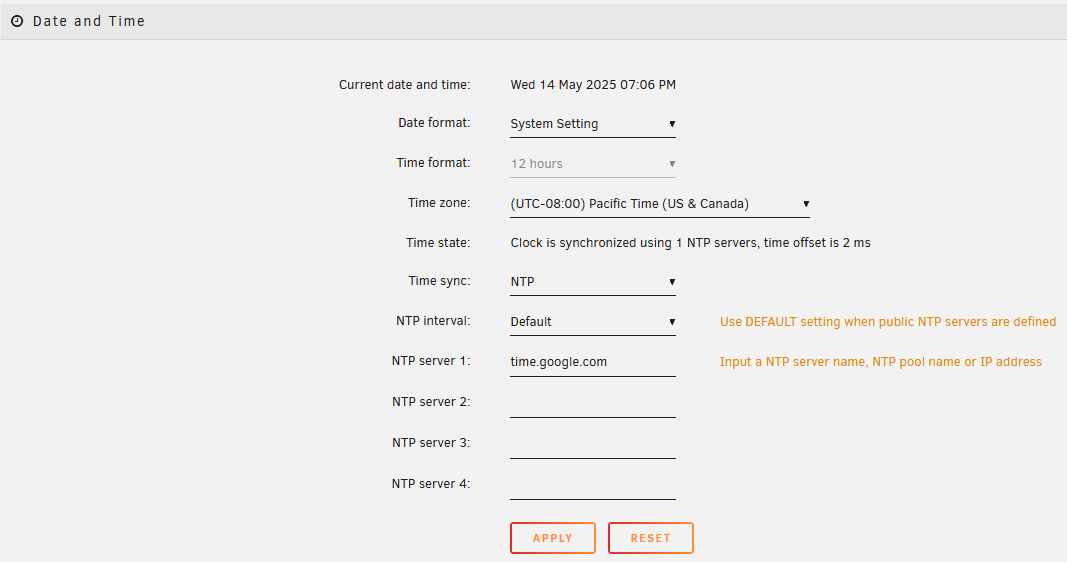
Disk Settings
You can modify additional settings for your disk devices on this page. Enable your array to start automatically on boot, adjust disk spin-down timers, and even change advanced driver settings like SMART polling frequency.


Docker
Docker containers allow you to integrate pre-configured Linux applications into your Unraid server. For more details, see the Docker Management page.
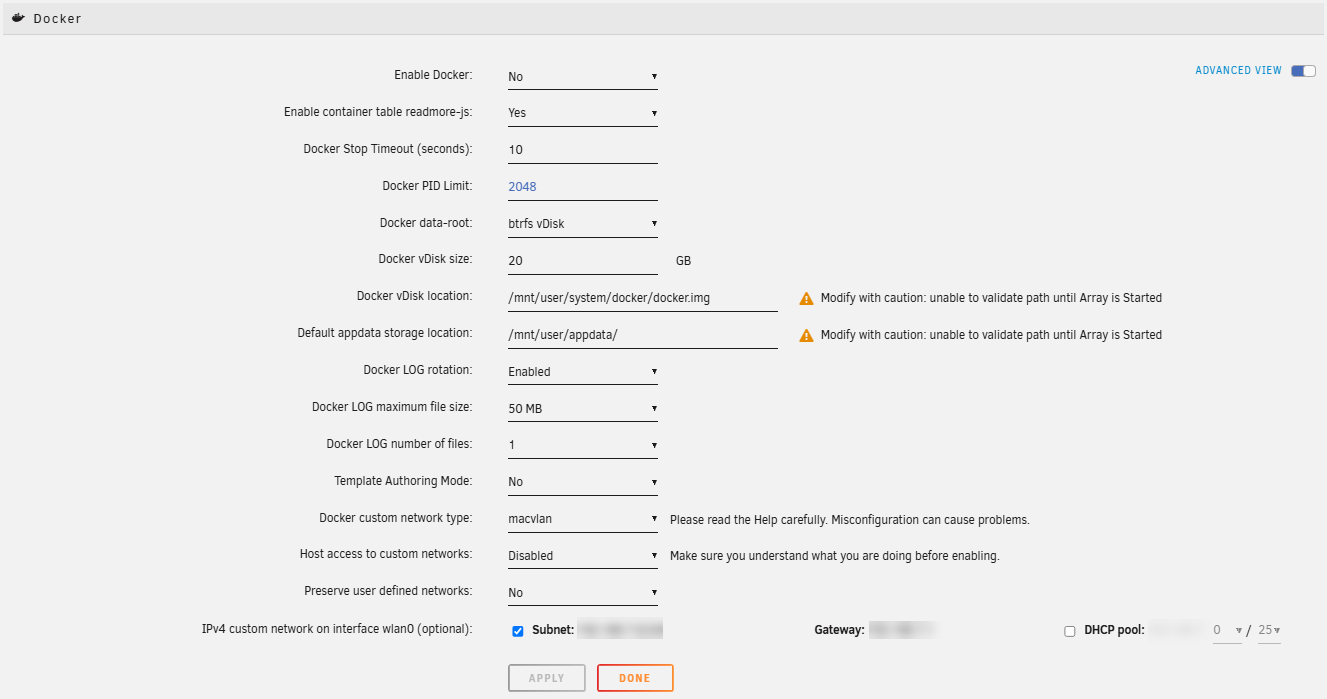
Identification
Unraid defaults to the hostname tower, but you can change it here. You can also add a description or model number for your system.
Management Access
You can configure various access settings for your Unraid server, including enabling Telnet or SSH, setting ports for SSL/TLS, HTTP, and HTTPS, and defining the default landing page for Unraid. For detailed information about securing your WebGUI with SSL certificates, see Securing your connection.
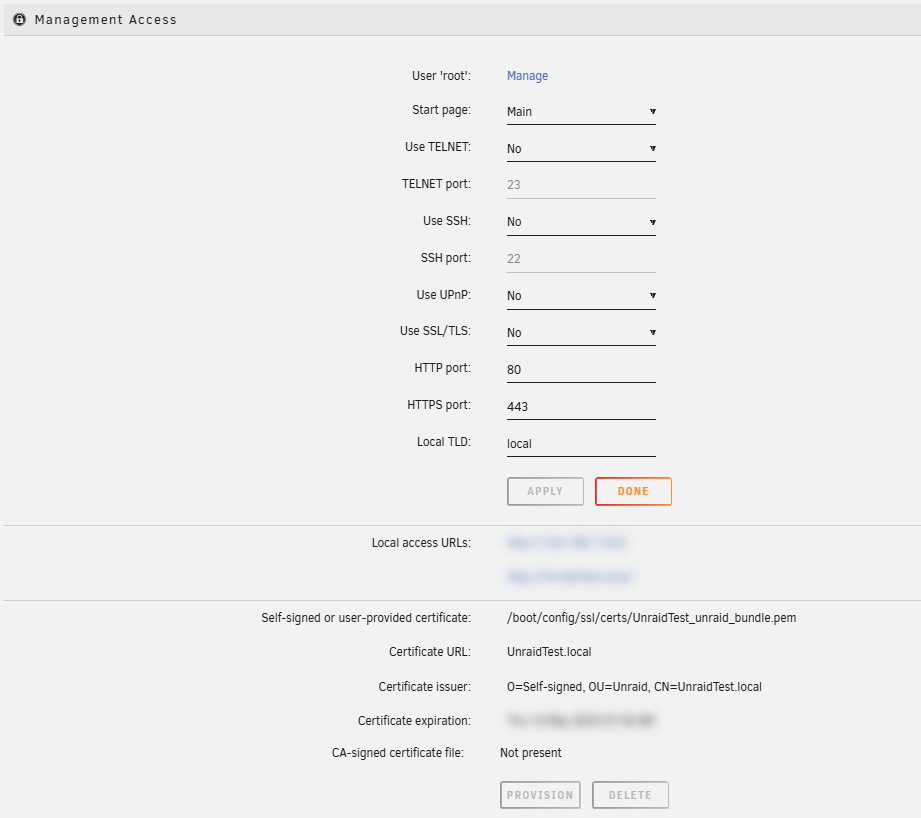
Network Settings
By default, Unraid tries to obtain an IP address from a DHCP server on your local network, usually provided by your router. On this page, you can configure a static IP address, set up bonding, bridging, or explore other options. While setting a static IP is recommended, it is not necessary to use Unraid.
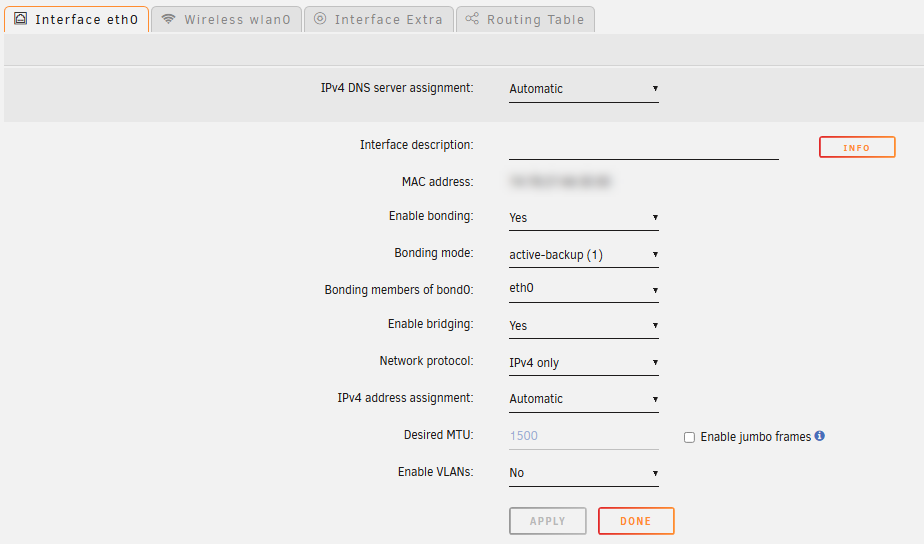
Power Mode
The Power Mode setting allows you to optimize your Unraid server for energy efficiency, balanced operation, or maximum performance. You can choose from available modes - Best power efficiency, Balanced operation, or Best performance - to match your workload and energy preferences. Adjusting Power Mode can help reduce power consumption, lower system temperatures, or provide additional resources for demanding tasks.
Changes take effect immediately and do not require a system restart.

Global Share Settings
User shares can greatly simplify the organization and access of content across multiple disks in the array. You have the option to specify which disks are allowed to participate in user shares through global inclusion or exclusion settings.
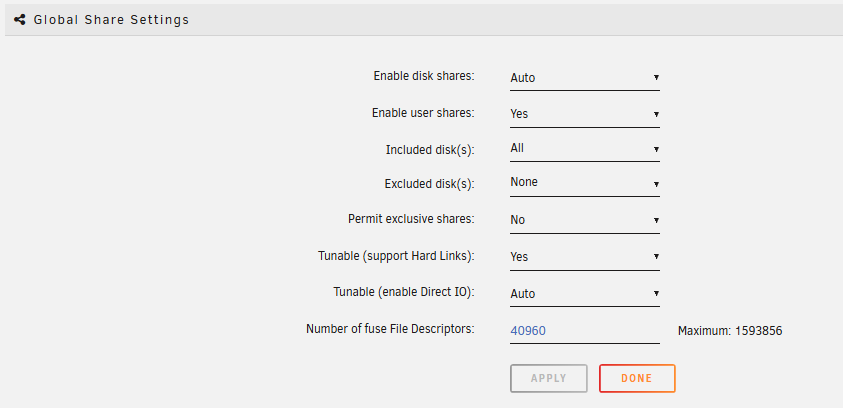
UPS Settings
Unraid can be connected to an APC (or compatible) UPS (Uninterruptible Power Supply) to allow the system to safely shut down during a power loss while still receiving battery power. You can configure the UPS connection and set policies for the shutdown command on this page.
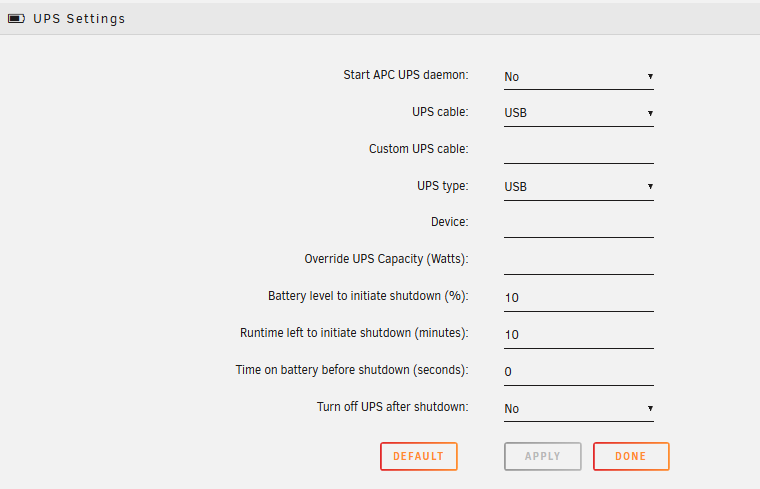
VM Manager
Virtual machines (VMs) can turn your server into a desktop or media player, and run applications not designed for Linux. For details on managing VMs on Unraid, see VM setup.
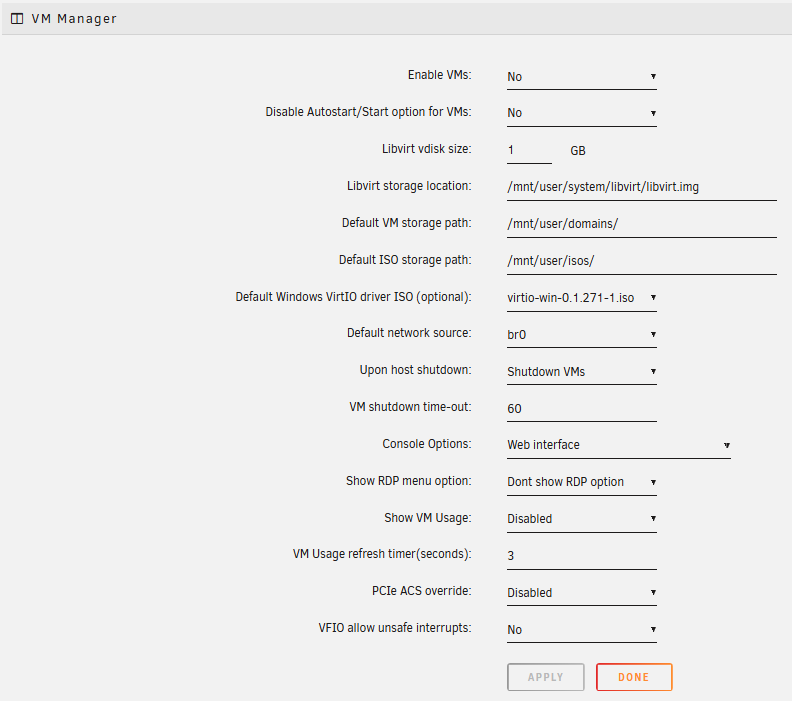
Network Services
Network Services let you configure network communication protocols on your Unraid server, which are essential for user and disk shares. You can also enable an FTP server, a logging server, and set up a VPN for secure remote access.
NFS (Network File System)
NFSv4 support is available in Unraid. You can enable or disable it for user shares and adjust the fuse_remember tunable to help resolve NFS Stale File Handle errors.
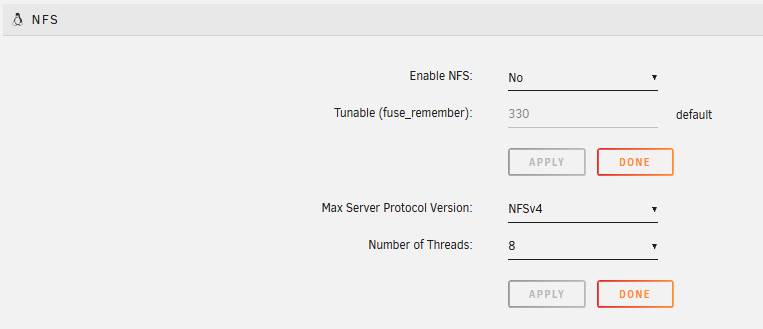
SMB (Server Message Block)
The SMB protocol is used by Microsoft Windows clients. From this page, you can enable it, define a workgroup, or join an Active Directory domain.
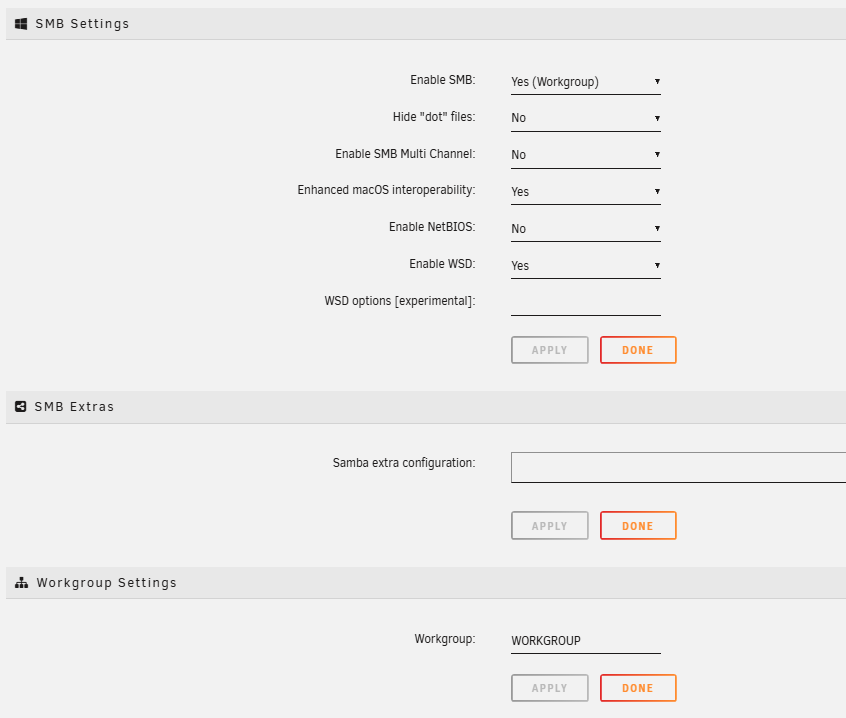
FTP (File Transfer Protocol)
Users can connect via FTP only if they are added to the FTP users field on this page. If no users are added, the FTP service will not start.
Syslog Server
The Syslog server permanently stores your system log, which is useful for troubleshooting since Unraid clears the log after each reboot.

Tailscale
The Tailscale section is only available if you have installed the Tailscale plugin.
The Tailscale section allows for secure remote access via the Tailscale VPN. Here, you can log in to connect your Unraid server to your Tailnet, view the assigned IP address and hostname, and enable or disable Tailscale connectivity.
You can also configure your server as a Subnet Router for local devices or as an Exit Node to route internet traffic. This section enables management of advertised routes, exit node status, Docker container integration options, and connection status monitoring for troubleshooting.
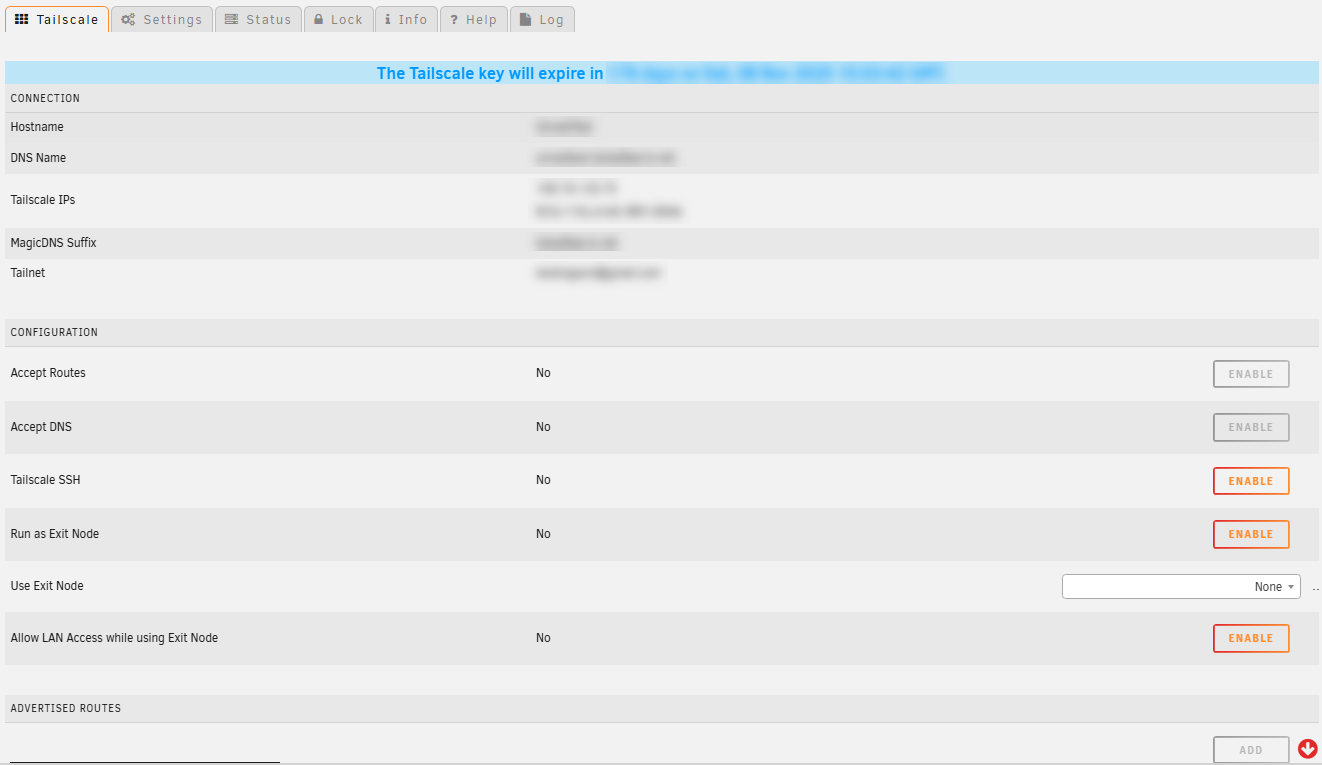
VPN Manager
You can establish a VPN connection to your Unraid server using Wireguard for secure internet connections.
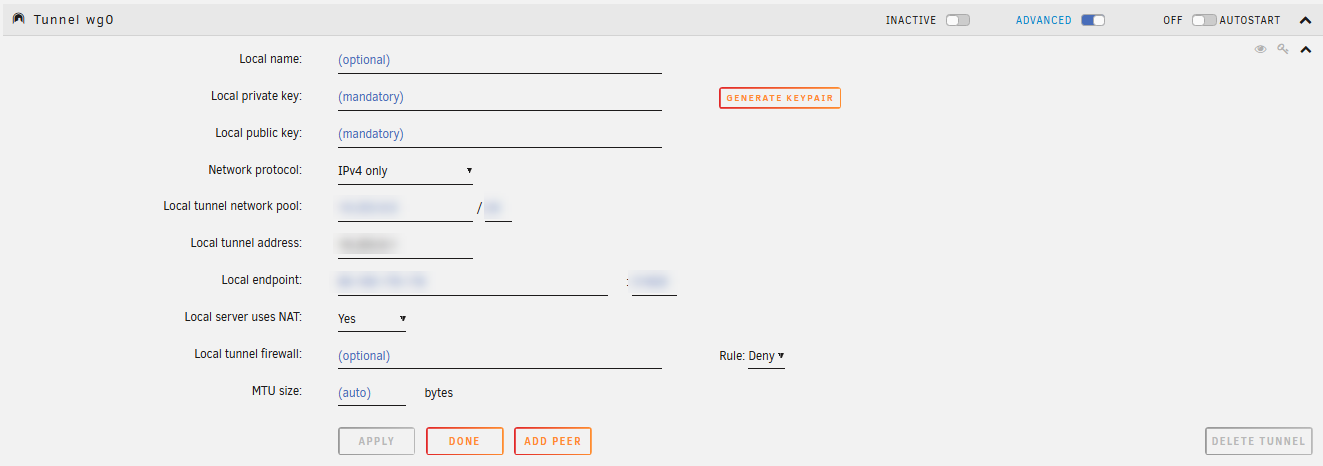
User Preferences
User Preferences allow you to configure various aspects of your interactions with Unraid OS, including notifications, display settings, UI customization, and the Mover schedule.
Confirmations
You can enable/disable the requirement for confirmations when performing various tasks from this location.
Console Settings
Allows you to customize the local system console. You can select the keyboard layout, adjust the screen blanking timeout, and enable or disable persistent Bash history across reboots. These options enhance your experience when using Unraid with a connected monitor and keyboard.

Display Settings
Customize the Unraid WebGUI appearance on this page by adjusting the date and time format, number format, and toggling between tabbed and non-tabbed views. You can also select the temperature unit and choose from different themes for the user interface.
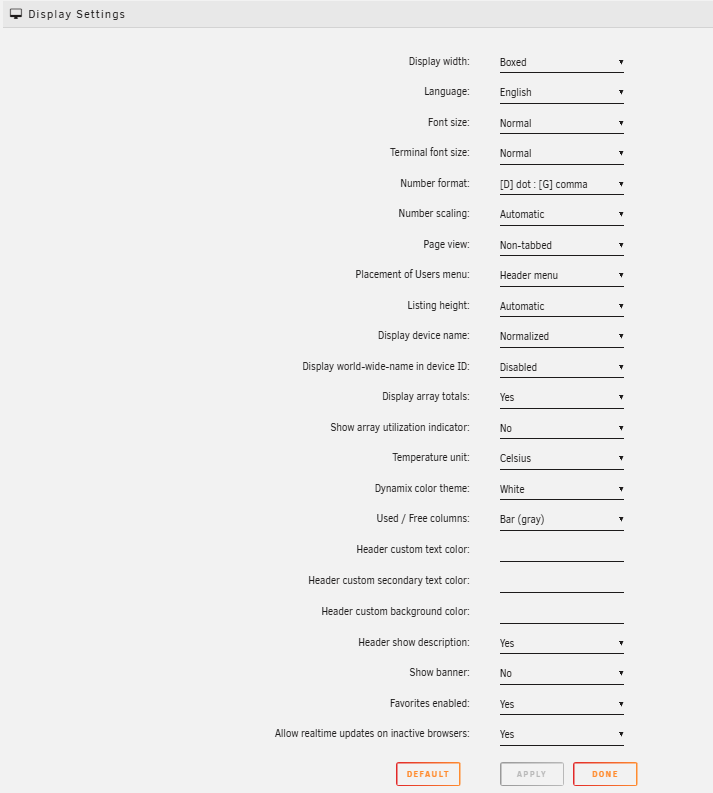
Notification Settings
Unraid can send you notifications about important system events, updates, and alerts through your browser, email, or third-party notification services. The Notification Settings page allows you to control how and when you receive these notifications.
To access Notification Settings, navigate to Settings → User Preferences → Notification Settings.
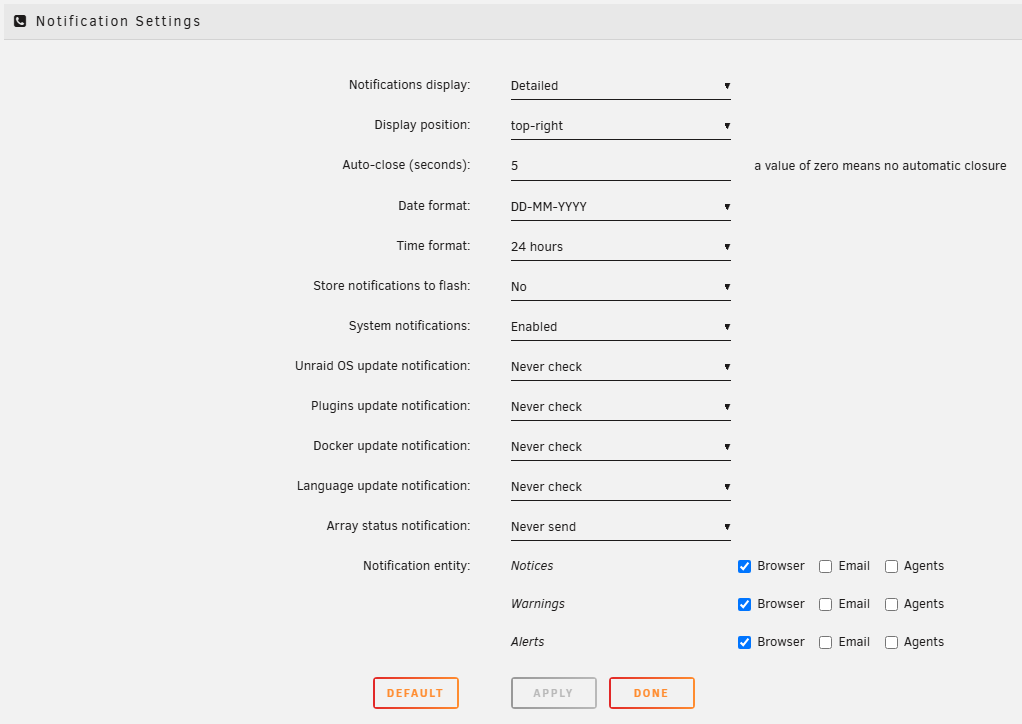
Display and behavior settings
Configure how notifications appear in your browser:
- Notifications display: Choose between Detailed or Summarized notification styles
- Display position: Set where notifications appear (top-right, top-left, bottom-right, bottom-left, or center)
- Auto-close (seconds): How long notifications stay visible before automatically closing
- Date format: Choose your preferred date format for notification timestamps
- Time format: Choose between 12 hours or 24 hours time display
- Store notifications to flash: Save notification history to your USB flash device (requires flash storage space)
Notification types
Control which events trigger notifications:
- System notifications: General system events and messages
- Unraid OS update notification: Alerts when new Unraid OS versions are available
- Plugins update notification: Alerts when plugin updates are available
- Docker update notification: Alerts when Docker container updates are available
- Language update notification: Alerts when language pack updates are available
- Array status notification: Alerts about array events and status changes
For each notification type, you're able to set the frequency to Never check, or checking daily, weekly, monthly, or, in some cases, even multiple times a day.
Delivery methods
Choose how you want to receive notifications for each category (Notices, Warnings, and Alerts):
- Browser: Display notifications in the WebGUI when you're logged in
- Email: Send notifications via email (requires SMTP configuration)
- Agents: Send notifications through configured third-party services
Enable Browser notifications for immediate visibility when using the WebGUI, and Email for alerts when you're away from your server. Use Agents to integrate with mobile apps and services like Discord or Telegram.
SMTP Settings
To receive email notifications, you need to configure your email server settings. Unraid supports many email providers including Gmail, Outlook, and custom SMTP servers.
The SMTP Settings can be found at Settings → User Preferences → Notification Settings → SMTP Settings.
Basic configuration:
- Preset service: Select a preset configuration (Gmail, Outlook/Hotmail, or Custom) to auto-fill common settings
- Sending email address: The email address notifications will be sent from
- Email recipients: Comma-separated list of email addresses to receive notifications
- Priority in header: Mark emails as high priority (Yes or No)
- Email subject prefix: Text to prepend to all notification email subjects (default: Unraid Status:)
Server settings:
- Mail server: SMTP server address (e.g.,
smtp.gmail.com) - Mail server port: SMTP port number (common ports:
465for SSL/TLS,587for STARTTLS,25for unencrypted) - Use SSL/TLS: Enable SSL/TLS encryption (Yes or No)
- Use STARTTLS: Use STARTTLS for encryption (Yes or No)
- Define a TLS certificate: Specify a custom TLS certificate if needed (Yes or No)
- TLS certificate location: Path to custom certificate file (only if Define a TLS certificate is enabled)
Authentication:
- Authentication method: Choose None, CRAM-MD5, or Login (username/password)
- Username: Your email account username (usually your full email address)
- Password: Your email account password or app-specific password
After configuring your settings, use the TEST button to verify your email configuration is working correctly.
Configuring Gmail with app passwords
Gmail requires app-specific passwords when using SMTP with accounts that have 2-step verification enabled (which is recommended for security).
To set up Gmail notifications:
- In Preset service, select Gmail (this will auto-fill the Mail server and Mail server port)
- Enter your Gmail address in Sending email address
- Enter recipient email address(es) in Email recipients
- Set Username to your full Gmail address (e.g.,
yourname@gmail.com) - For Password, you'll need to generate an app password:
- Go to your Google Account settings
- Navigate to Security
- Under "How you sign in to Google," ensure 2-Step Verification is enabled (required for app passwords)
- In the same section, find and click App passwords (or search for "App passwords" in the search bar)
- You may need to verify your identity
- Enter a custom name for the App name, like "Unraid Server".
- Click Create
- Google will generate a 16-character password.
- Copy this password and paste it into the Password field in Unraid
- Click TEST to verify the configuration
- Click DONE to save your settings
- Mail server:
smtp.gmail.com - Mail server port:
465 - Use SSL/TLS:
Yes - Use STARTTLS:
No - Authentication method:
Login
Always use app passwords instead of your main Gmail password. App passwords can be revoked individually without changing your main account password, providing better security if your Unraid configuration is ever compromised.
Notification Agents
Notification agents allow you to send alerts to third-party services and mobile apps. Unraid includes built-in support for many popular notification services.
To access Notification Agents, click the Notification Agents link on the Notification Settings page, or navigate to Settings → User Preferences → Notification Settings → Notification Agents.
Built-in agents include:
 Bark: iOS notification app
Bark: iOS notification app Boxcar: Push notification service
Boxcar: Push notification service Discord: Send notifications to Discord channels via webhook
Discord: Send notifications to Discord channels via webhook Gotify: Self-hosted notification server
Gotify: Self-hosted notification server ntfy.sh: Simple HTTP-based notification service
ntfy.sh: Simple HTTP-based notification service Prowl: iOS push notifications
Prowl: iOS push notifications Pushbits: Self-hosted notification relay
Pushbits: Self-hosted notification relay Pushbullet: Cross-platform notification service
Pushbullet: Cross-platform notification service Pushover: Push notification service for iOS and Android
Pushover: Push notification service for iOS and Android Pushplus: Chinese push notification service
Pushplus: Chinese push notification service ServerChan: Chinese server monitoring and notification service
ServerChan: Chinese server monitoring and notification service Slack: Send notifications to Slack channels via webhook
Slack: Send notifications to Slack channels via webhook Telegram: Send messages to Telegram bot
Telegram: Send messages to Telegram bot
Configuring an agent:
- Select the agent you want to configure from the list
- Change Agent function from Disabled to Enabled
- Fill in the required fields for that service:
- Most agents require a webhook URL, API token, or access token
- Some services require additional configuration like channel IDs or group codes
- Configure Notification title (usually set to Subject to use the notification subject)
- Configure Notification message (usually set to Description to use the full notification text)
- Click DONE to save
Each agent has different requirements - consult the documentation for your chosen service to obtain the necessary API keys, webhook URLs, or tokens.
You can enable multiple agents simultaneously. For example, you might use Discord for team notifications and Pushover for personal mobile alerts. Note that all notifications are sent to all enabled agents, so using multiple agents may result in receiving duplicate notifications.
Scheduler
The Scheduler settings page allows you to easily configure the frequency for automated tasks including parity checks, the cache Mover, and TRIM/Discard operations for SSDs.
User Utilities
Third-party plugins are displayed here, enhancing Unraid’s functionality and giving you more control over your server. For example, the Community Applications plugin is included. Other plugins offer features for system monitoring, maintenance, storage management, and appdata backups.
* "WireGuard" and the "WireGuard" logo are registered trademarks of Jason A. Donenfeld.